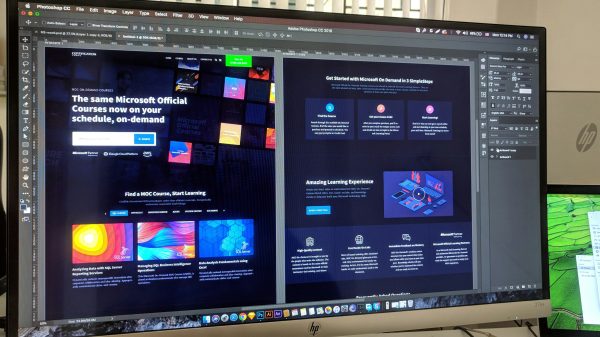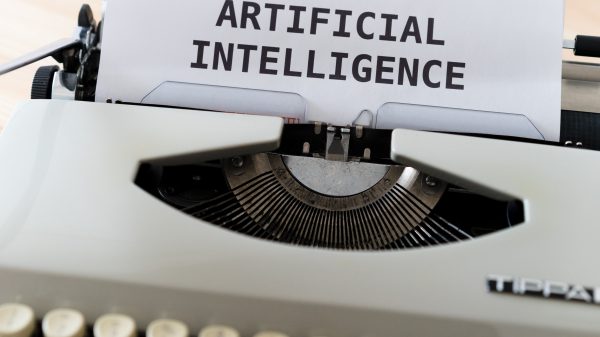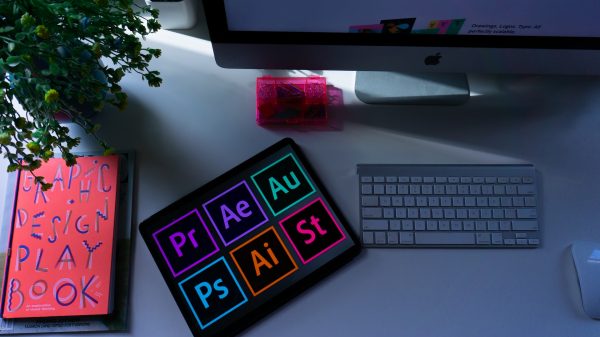Tired of being cut off mid-sentence by Google Translate’s character limit? We hear you! Whether you’re trying to translate a research paper or an important business document, it can be incredibly frustrating when your text exceeds the infamous 5,000 character threshold. But fear not! In this article, we have some insider secrets that will help you beat the system and push past those limitations. Say goodbye to chopped-up translations and hello to seamless communication across languages with our guide on how to translate more than 5,000 characters using Google Translate. Let’s dive in!
The 5,000 characters limit by Google
Google’s 5,000 characters limit has long been a point of frustration for those who rely on their translation services. While the limitation might seem arbitrary and restrictive, it’s important to understand the reasoning behind it. Google’s algorithms are designed to optimize efficiency and accuracy, and this character limit helps ensure that translations are as accurate as possible.
However, there are ways to work around this limitation and translate more than 5,000 characters using Google’s service. One option is to divide your text into smaller chunks and translate them individually. This may require some additional effort in piecing together the translated segments, but it can be a viable solution for shorter texts.
Additionally, you can also explore alternative translation tools that offer higher character limits or even unlimited translations. These tools often utilize different technologies or approaches to deliver accurate translations without constraints. While Google may be the go-to choice for many due to its convenience and familiarity, exploring other options could provide a fresh perspective on how you approach translation tasks.
In conclusion, while Google’s 5,000 characters limit may pose challenges for longer texts, there are alternative strategies available to overcome this limitation. By understanding the reasons behind this restriction and seeking out other translation tools with higher limits or unlimited translations options, you can find new ways to work within these constraints. Ultimately, expanding your horizons beyond what is immediately available can unlock new possibilities in translating larger chunks of text efficiently and accurately.

Understanding the limitations of Google Translate
One of the most important things to keep in mind when using Google Translate is that it is an automated translation tool. While it can be incredibly helpful and convenient, it does have its limitations. One major limitation is that the accuracy of the translations can vary depending on the complexity and nuances of the text.
Another limitation to consider is that Google Translate may not always provide accurate translations for idioms, slang, or cultural references. These types of language elements are often specific to a particular language or culture and may not have direct equivalents in other languages. As a result, translating these phrases may lead to confusion or misunderstanding.
Furthermore, Google Translate cannot fully capture the subtleties and intricacies of human language. It cannot understand context, tone, or intention behind words, which can lead to misinterpretations in certain situations. It’s important to remember that while technology has made significant advancements in machine translation, it is still no match for human translators who possess a deep understanding of both source and target languages.
In conclusion, while Google Translate can be a useful tool for getting quick translations or grasping basic meanings of foreign text, it’s crucial to approach its results with caution. Understanding its limitations will help users use it more effectively and make informed decisions about whether professional human translation might be necessary for their specific needs.
Breaking down the text into manageable chunks
Breaking down the text into manageable chunks is a crucial strategy when it comes to translating large volumes of text. Instead of trying to tackle the entire text all at once, breaking it down into smaller sections makes the task more achievable and less overwhelming. This approach allows for better focus and concentration, leading to more accurate translations.
Dividing the text also helps identify patterns or recurring phrases, making translation work more efficient. By analyzing each section individually, translators can develop a clearer understanding of the context and nuances present in the source language. This level of detailed analysis ensures that translations are not only faithful to the original content but are also culturally sensitive and appropriate for the target audience.
In addition, breaking down texts into smaller sections facilitates collaboration among multiple translators working on a project. Each translator can be assigned specific sections, ensuring consistency in style and terminology throughout the document. It also enables easy tracking of progress, as milestones can be set for each section completed. Ultimately, breaking down texts into manageable chunks not only simplifies translation work but also improves overall quality and efficiency in delivering translated content.

Utilizing additional translation tools and resources
Utilizing additional translation tools and resources can immensely enhance your ability to translate beyond the 5,000 character limit imposed by Google. While Google Translate is undoubtedly a powerful tool, it may fall short in accurately capturing context and nuances of certain languages. To overcome this limitation, integrating other translation tools like DeepL or Microsoft Translator can be highly beneficial. These alternative tools utilize advanced algorithms and neural networks to deliver more accurate translations with improved fluency.
Another valuable resource to consider is specialized glossaries and vocabulary databases. These collections of industry-specific terms help maintain consistency throughout your translations by providing predefined translations for commonly used terms in fields such as legal, medical, or technical writing. By combining these resources with machine translation tools like Google Translate, you can expedite your translation process while maintaining high quality and accuracy.
Additionally, collaborating with human translators through freelance platforms or agencies can further augment your capacity for translating large volumes of text while ensuring accuracy and maintaining the authenticity of the content. Human translators possess invaluable expertise in navigating complex sentence structures, cultural references, and idiomatic expressions that automated translation tools might struggle with.
By harnessing the power of additional translation tools, specialized glossaries, and human expertise, you can break free from the constraints of Google’s character limit and unlock a wider range of possibilities for efficient and precise translations. Remember to strike a balance between automation and human involvement to produce polished translations that truly resonate with your target audience.
Tips for maintaining accuracy during translation process
Maintaining accuracy during the translation process is crucial to ensuring that your message comes across clearly and effectively in another language. Here are some tips to help you maintain accuracy while translating:
- Understand your target audience: Consider the culture, regional dialects, and nuances of the language you are translating into. This will help you choose the right words and phrases that resonate with your target audience and avoid any potential misinterpretations.
- Use reliable resources: Relying solely on machine translation tools can lead to inaccuracies, as they often struggle with context and idiomatic expressions. Supplementing these tools with trusted dictionaries, glossaries, and expert opinions ensures a more accurate translation.
- Proofread and edit: Once you have completed the initial translation, take the time to proofread it carefully. Look for any errors or inconsistencies in grammar, punctuation, or syntax. Additionally, consider having someone else review your work to catch any mistakes you might have missed.
By following these tips for maintaining accuracy during the translation process, you can ensure that your translated content accurately conveys your intended meaning while resonating with your target audience in a meaningful way.
![]()
Piecing together the translated text
Piecing together the translated text can be a challenging task, especially when dealing with large amounts of text. While Google Translate offers a convenient option for instant translations, it does come with its limitations. The character limit of 5,000 characters can often pose a problem when trying to translate longer documents or articles.
One workaround is to break down the text into smaller chunks and translate them separately. This allows you to stay within the character limit while still getting an accurate translation. However, it’s important to keep in mind that this method may result in some loss of context or flow between sentences.
Another approach is to use alternative translation tools or services that offer higher character limits. There are various online platforms available that allow you to upload entire documents for translation without any restrictions on size. These tools utilize advanced algorithms and methods to provide more accurate translations while maintaining the original meaning and tone of the text.
In conclusion, piecing together translated text requires careful consideration and flexibility. By breaking down larger texts into smaller chunks or utilizing alternative translation tools with higher character limits, you can overcome the restrictions posed by Google Translate. Experimenting with different methods will help you find what works best for your specific needs and ensure seamless translations even for lengthy texts.
Conclusion: Expanding your translation capabilities with Google
Expanding your translation capabilities with Google can significantly enhance your productivity and help you overcome language barriers. With its user-friendly interface and advanced algorithms, Google Translate is constantly evolving to meet the needs of its users. However, it is important to understand that while Google Translate offers a quick solution for translating short phrases or sentences, it may not always guarantee accuracy for longer texts.
To overcome the 5,000 character limit on Google Translate, one effective method is to break down your text into smaller segments and translate them separately. By doing so, you can ensure a more accurate translation and also have better control over the final output. Additionally, utilizing other translation tools in conjunction with Google Translate can provide further enhancements and increase overall accuracy.
Moreover, investing time in learning basic linguistic concepts will enable you to make more informed decisions when using automated translation services like Google Translate. Understanding grammar rules and context can help you navigate through potential pitfalls such as mistranslations or ambiguous interpretations. Lastly, always remember that human expertise goes hand in hand with technology; consulting professional translators when dealing with complex documents or sensitive content will ensure optimal results.
In conclusion, while Google Translate is an invaluable tool for enhancing your translation capabilities, it is crucial to be aware of its limitations and utilize appropriate techniques to bypass them effectively. Expanding your knowledge about language-specific nuances and seeking assistance from human experts will enable you to unlock the full potential of this powerful tool while maintaining quality in your translations.































